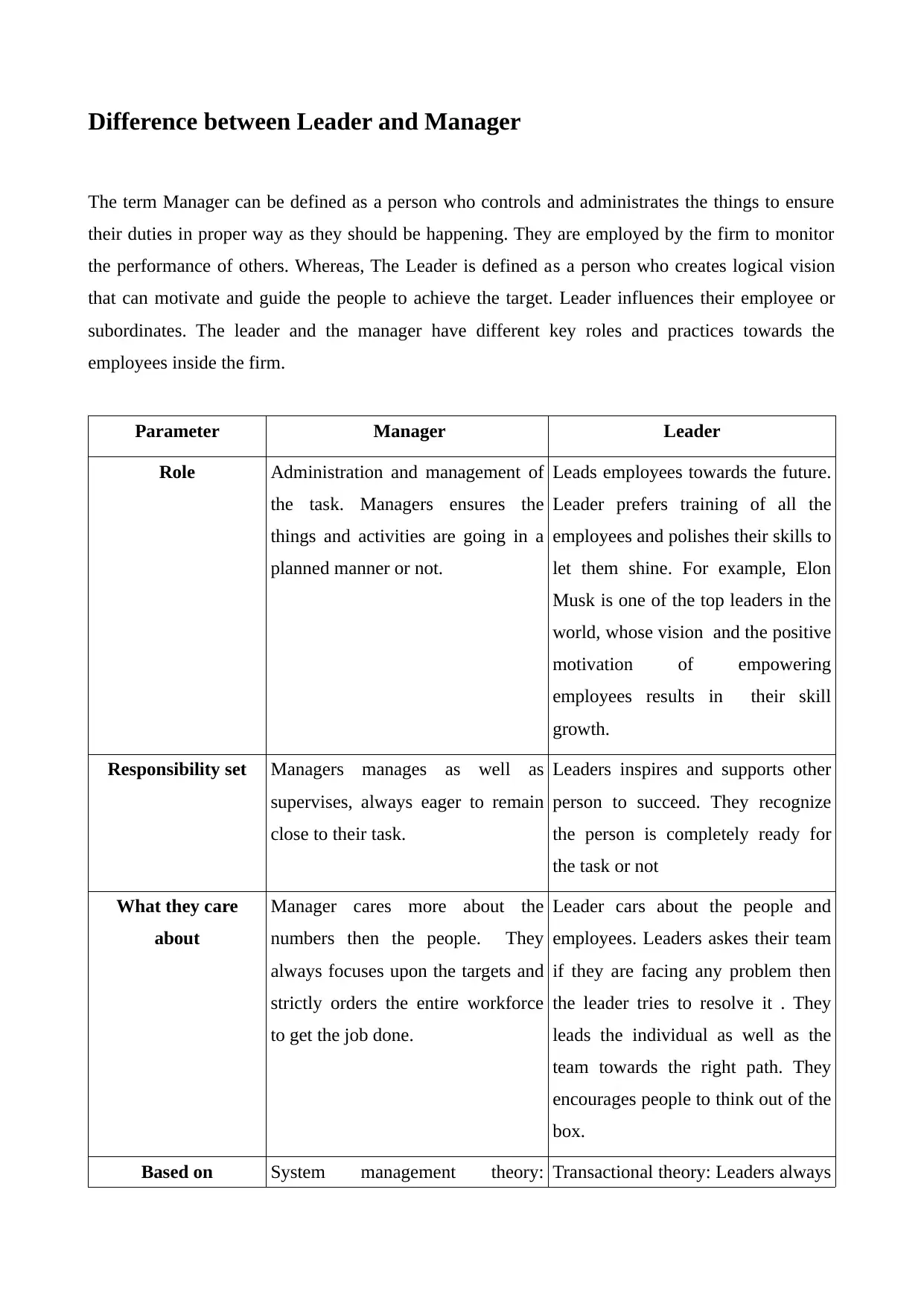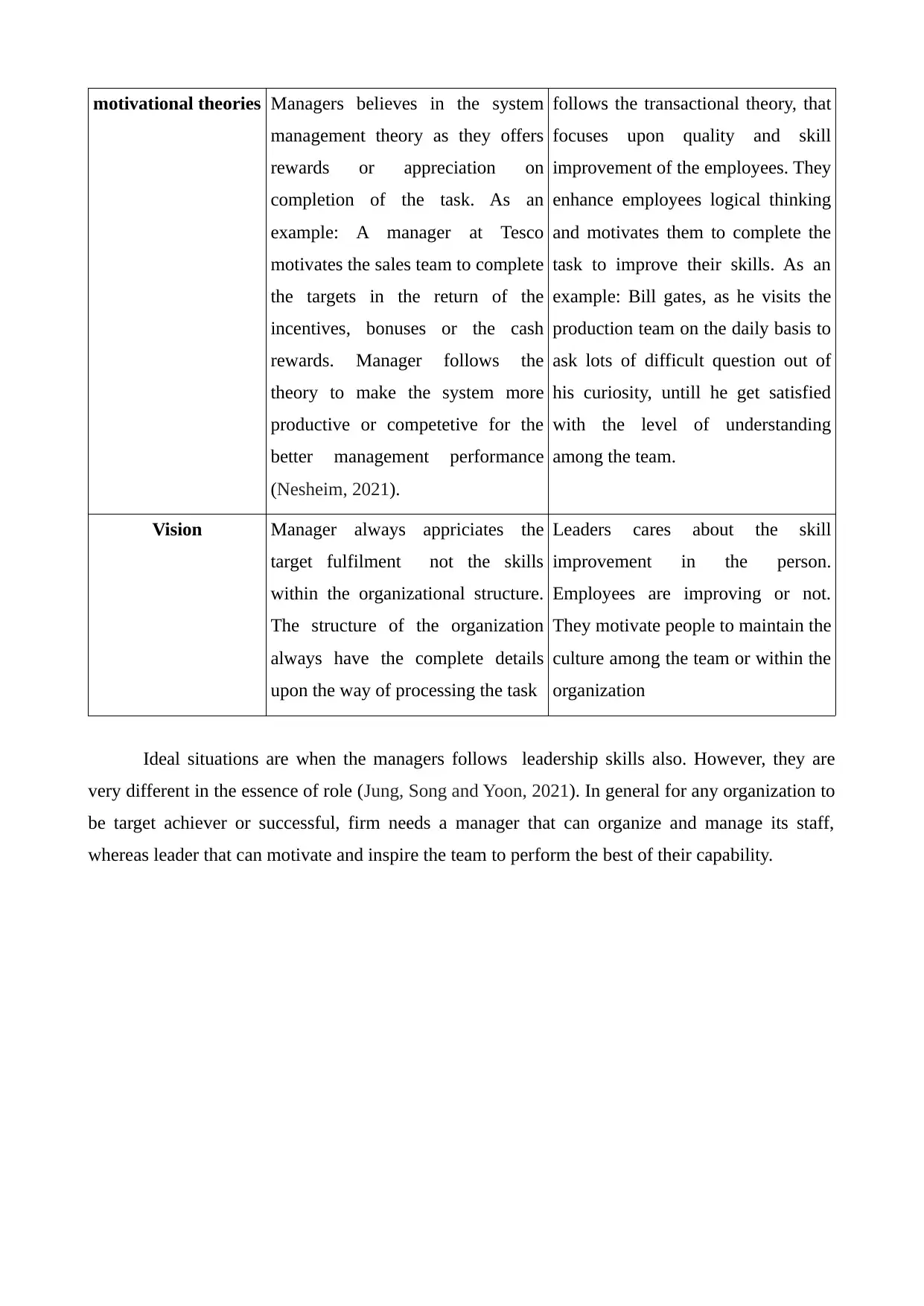Management & Operations: Analyzing the Leader and Manager Roles
VerifiedAdded on 2023/06/18
|4
|664
|160
Essay
AI Summary
This essay elucidates the differences between a leader and a manager, defining a manager as someone who controls and administrates tasks, while a leader creates a vision to motivate and guide people. It contrasts their roles, responsibilities, focus, and application of motivational theories. Managers administer and ensure tasks are completed as planned, often employing transactional theory with rewards for task completion. Leaders, conversely, inspire, support, and develop their employees, encouraging innovative thinking. The essay references system management theory and transactional theory to highlight the different approaches. Ultimately, successful organizations require both effective managers to organize and manage staff, and inspiring leaders to motivate teams to achieve their full potential. The study refers to academic articles to support the arguments.
1 out of 4










![[object Object]](/_next/static/media/star-bottom.7253800d.svg)